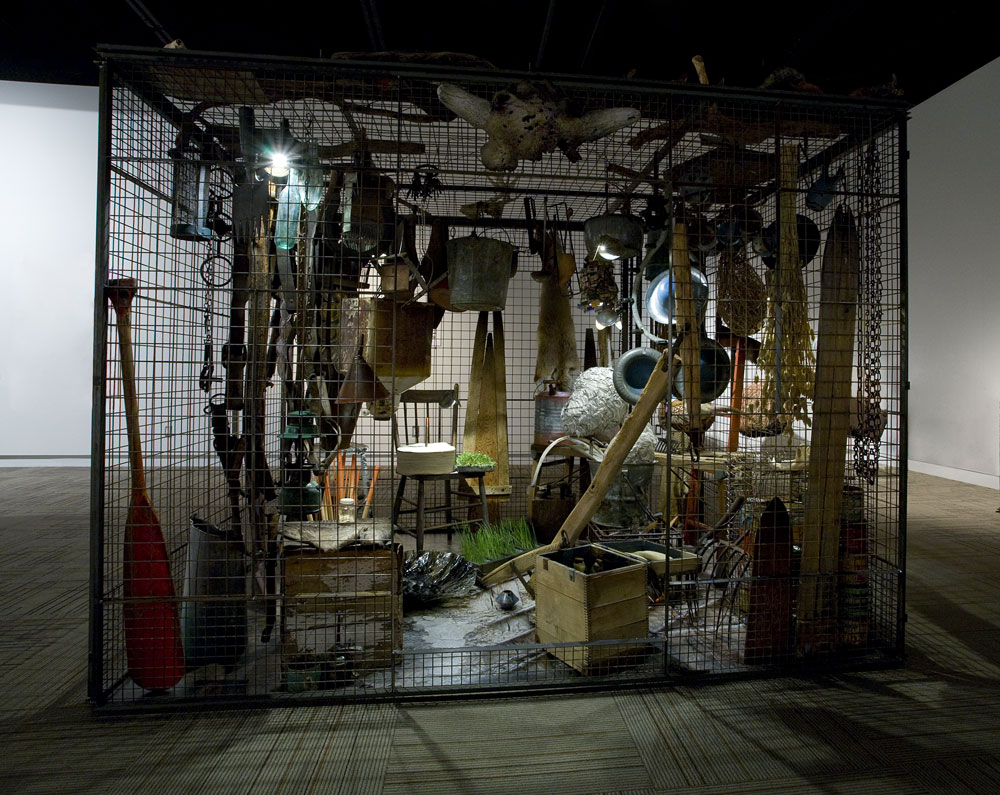| The Space Between Cities, 2011 page 1 | go to page 2 |
In collaboration with Sherri Chaba

Mixed media installation: steel, wire, agricultural implements, wood, farm furniture, glass, bones, domestic and agricultural tools, ladder, fossils, driftwood, tumbleweeds, resin, digital images, lamp, fur stretchers, mink and fox pelts, bird wing, rope, harness, grain seedlings, wasp nests, sunflower roots, antlers, paddle, bird’s nest and feathers.
Dimensions: 8 x 30 x 20 feet (variable)
Artist Statement
The seeding and growing season this year has changed dramatically for the communities living in the two areas where we both reside in Alberta. Sherri’s family farm in Red Water has undergone some destruction of waterways, trees and land caused by increased exploration and production in oil and gas. The agricultural farms around my home on the outskirts of Edmonton are being replaced by the expansion of housing developments causing the family farmers to sell their animals and equipment and move to a more urban environment. The rapid urbanization and change to more industrialized farming are not just local issues within Alberta but can be seen in corporate agriculture all around the world. The Space Between Cities is a metaphor for resource extraction and urbanization.
The Space Between Cities has a building structure that serves as an elaboration of rural history- representing a lifestyle that barely exists today. Early pioneers settled throughout Alberta and in the rural areas became homesteaders who developed mixed farms of cultivated lands, a variety of livestock and, woodlots. These early settlers often supplied their own food, clothing and tools and lived in a rural community in a spirit of co-operation and sharing many activities. A great number of the objects we chose came from artifacts stored lovingly by Sherri’s father, Alex Chaba, who has created a dense historical collection. When viewing, one is overwhelmed by feelings of nostalgia. Those farmers are long gone, farmhouses abandoned, replaced by gigantic industrialized monoculture farm organisations that do not have the same sense of value in the land or the community of people that live there.
Another component of The Space Between Cities is an apocalyptic representation of the odd-shaped tailings ponds (seen on Google maps) that create permanent storage for the toxic by-products of oil excavation. Aboriginal people in Northern Alberta can no longer hunt and gather foods from their land. Oil is being extracted from the tar sands at Fort McMurray close to the Athabasca River, the traditional home of many First Nations people. The disregard for land stewardship has created communities so adversely affected that the traditional hunting and fishing must be abandoned to search for ways to reclaim their land, water and way of life.

| Detail |

| go to page 2 | top of page |